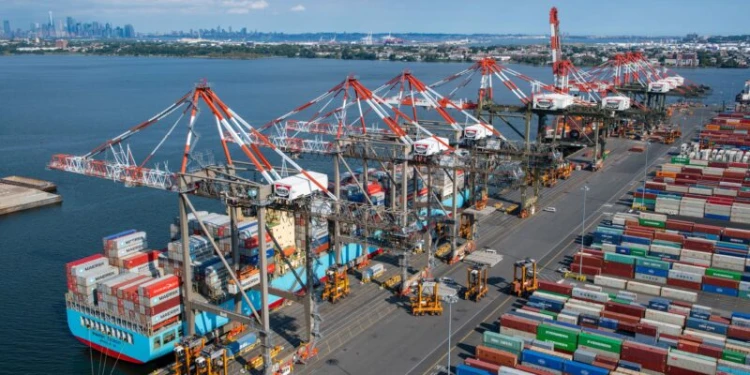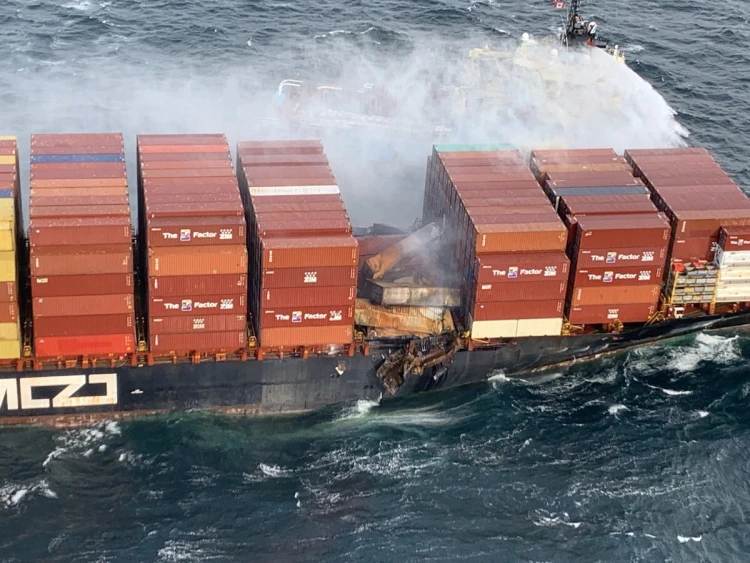Shipping line Hapag-Lloyd suffers ‘big miss’ as Q3 profits slump
Wednesday, 08 May 2024
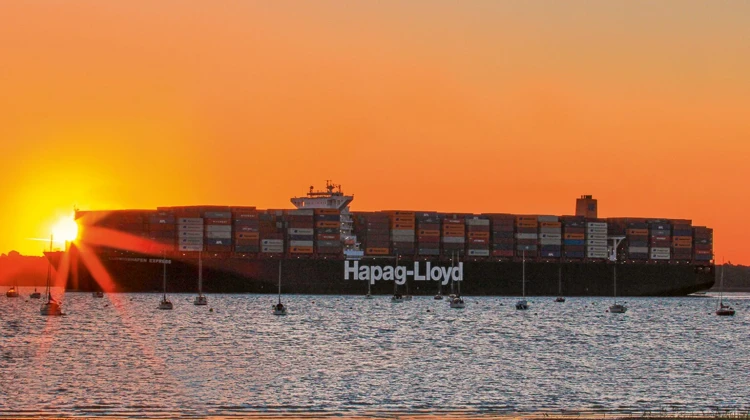
Germany’s Hapag-Lloyd, the world’s fifth-largest ocean carrier, reported much lower profits than expected for the third quarter as sinking freight rates offset improved volumes.
“Volume is really not that bad. Rates are the problem,” said Rolf Habben Jansen, Hapag-Lloyd’s CEO, on Thursday’s conference call with analysts.
Rates are being driven down by overcapacity as a record wave of newbuildings is delivered and capacity removals — ship idling and scrapping — do not keep pace.
“The orderbook is still very substantial with quite a lot of deliveries scheduled,” said Habben Jansen. “This leads us to the view that for a number of quarters — probably six to eight — we certainly expect supply growth to outpace demand growth, which will continue to put pressure on the market.
“We do not expect a dramatic recovery of demand in the next couple of quarters. The macro environment remains challenging, there are two wars going on, interest rates are still pretty high, inflation is higher than it should be, and investor sentiment is not great.
“So, it will be a challenging market, not only for the remainder of this year, but certainly also in 2024 and potentially a bit after that.”
Earnings miss the mark
Hapag-Lloyd reported net income of $293 million for Q3 2023, down 94% year on year and down 73% sequentially versus net income of $1.102 billion in the second quarter of this year.
Freight rates (including contract and spot rates) averaged $2,624 per forty-foot equivalent unit in Q3 2023, a 14% decline versus the second quarter, while volume rose 5% quarter on quarter. Rates in the latest quarter were still 21% higher than rates in Q3 2019, the corresponding period pre-COVID.
Hapag-Lloyd’s earnings came in at $1.63 per share, 42% below analyst consensus. Earnings before interest, taxes, depreciation and amortization of $744 million was 21% under the consensus, while earnings before interest and taxes (EBIT) of $228 million came in 47% below consensus.
It was “a big miss,” wrote Deutsche Bank analyst Andy Chu.
Hapag-Lloyd tightened its guidance and now expects full-year EBIT (operating profits) of $2.4 billion to $3.4 billion. Given that its EBIT in the first nine months totaled $2.99 billion, this implies Q4 2023 EBIT of minus-$590 million to $410 million, with a midpoint in the red.
Hapag-Lloyd won’t sign loss-making contracts
Rates are at loss-making levels in the Asia-Europe and trans-Atlantic trades, which “are under tremendous pressure at this time,” said Habben Jansen.
In response, Hapag-Lloyd and its partners in THE Alliance have canceled four major east-west services to date, three more recently plus one previously. “What we’ve done differently this time is we have chosen not to go out and ‘blank’ [cancel] services on a week-by-week basis, but rather, remove entire services from the network.”
Hapag-Lloyd and other liner operators are about to negotiate new annual contracts for their Asia-Europe services that renew at the beginning of the calendar year. Because these negotiations are taking place when spot rates are extremely weak, contract rates could fall significantly year on year.
But Habben Jansen maintained that Hapag-Lloyd would rather lose business than lock in year-long losses under a contract. To the extent contract volumes are lost, the company would idle ships and reduce voyage costs (65% of its voyage costs are variable).
“We see expectations out there for contract rates that are unrealistic. At those levels, we will not close, because we’re not going to close contracts at rate levels where we would, for sure, lose a lot of money.
“We’d rather take out cost and capacity if and when that’s needed. So, I would expect that in the end, those contracts that start at the beginning of the year will be above spot levels we see today.”
Potential trade disruptions ahead
During the analyst call, Habben Jansen also cited potential trade flow disruptions, including the Panama Canal water-level crisis and the threat of a port worker strike next year on the U.S. East and Gulf coasts.
“I think the drought in the Panama Canal is a real problem. The latest news is that capacity is potentially going down 30-40% at the beginning of next year. That means the number of ships going through there today cannot all go through there — and we have to find solutions for that. Rerouting some ships via the Suez Canal is certainly one of the options.”
On a potential U.S. dockworker strike, he said, “We have seen in the past — many, many times — that we all of a sudden have space constraints, and then the market changes tremendously. If you look at 2024, there are all kinds of scenarios. With the negotiations taking place on the U.S. East Coast, there are already people talking about a possible strike. These are the types of risks you need to factor in.”
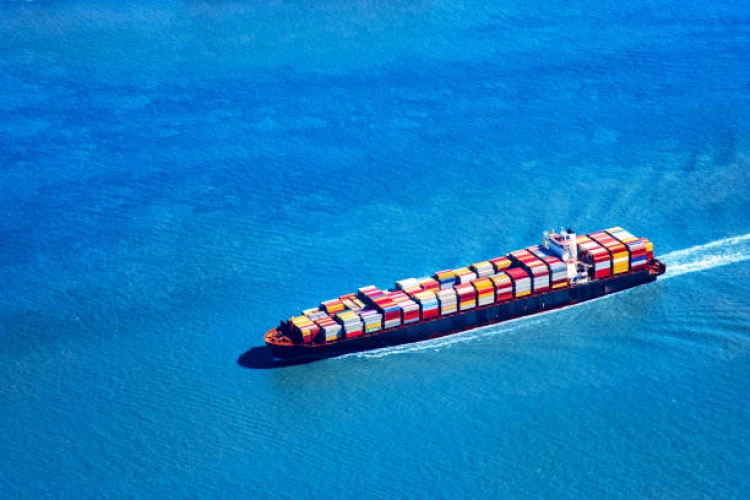
06 January 2025
Hurricane Beryl trims cargo volumes in Houston and New Orleans
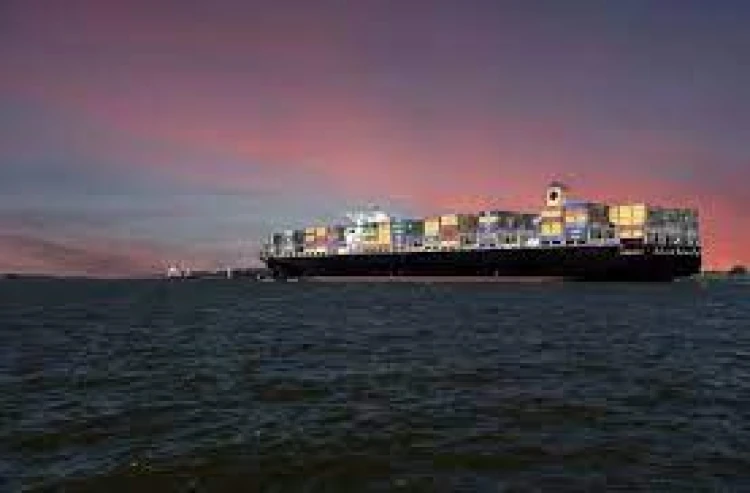
25 January 2025
Container freight rates tumble

08 February 2025
